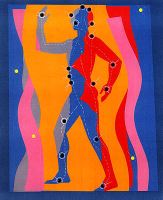 David Mayor is the editor of the book, Electroacupuncture: A Practical Manual and Resource. In The Journal of Chinese Medicine he reviews electroacupuncture and its use to treat peripheral facial paralysis.
David Mayor is the editor of the book, Electroacupuncture: A Practical Manual and Resource. In The Journal of Chinese Medicine he reviews electroacupuncture and its use to treat peripheral facial paralysis.
I found his comparison between acupuncture and electroacupuncture instructive.
Here are the differences.
Manual acupuncture
- Needle manipulation is brief and intermittent
- Only “low frequency” is possible (twirling or lifting-thrusting)
- Strong manipulation risks tissue damage
Electroacupuncture
- Stimulation continues for the duration of treatment
- No limitation on frequency of stimulus (frequency-specific effects occur)
- Strength of stimulation only limited by patient tolerance
Advantages of electroacupuncture vs manual acupuncture
- More effective in some situations, and often potentiates the effects of traditional methods, particularly when strong, continued stimulation is required, as when treating paralysis or some forms of pain
- Can be less time consuming and demanding of the practitioner in training and practice
- Results may in some cases be more rapid and longer lasting
- May have specific effects on pain, relaxation, circulation, and muscle that differ from manual acupuncture
- More readily controlled, standardized, and objectively measurable
- Non-invasive stimulation methods can be cost effective for home treatments, perhaps between sessions with a practitioner, although some forms of treatment require supervision
- Permits stronger, more continuous stimulation with less tissue damage
6/19/07 18:54 JR